
TSAVO FRIENDS
15-10-2020 by Giovanna Grampa
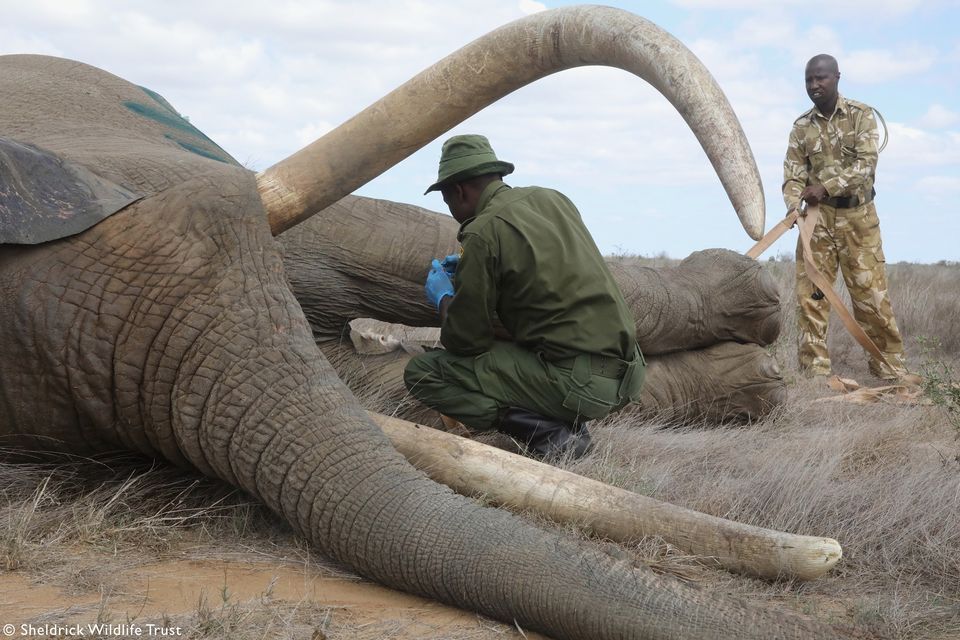
Savannah stories often intertwine with different destinies.
A baby elephant is born and a few kilometres away poachers throw poisoned arrows at a magnificent specimen with trophy tusks. This is what happened a few days ago in Tsavo East National Park.
Watching the first uncertain steps of a puppy born a few hours ago is a sensation that cannot be expressed with any of the terms that usually indicate emotions; seeing and touching the placenta that has kept it for 22 months in the womb is a dream that has been chased for a long time. Definitely, for me, a lucky day but even more so for a magnificent specimen of elephant that found itself in front of us during our usual reconnaissance patrols in search of sick or injured animals.
At the Aruba puddle a family of elephants are watering themselves with consolidated movements of lazy, timeless sleepiness. In the distance an old solitary male approaches with a slow and steady gait. It is a mighty, powerful animal, as few can be seen in the Tsavo park: its head is gigantic, its forehead convex while its dangling trunk is framed by a pair of exceptionally long, curved, thick, shiny ivory tusks. He makes his way through the puddle while the other elephants, out of hierarchical respect, step aside leaving him alone, the only actor on stage. His huge tusks to our eyes look like the marble columns of an ancient Greek temple. This rare specimen wears a radiocollar, heavy and uncomfortable, testifying to its special rank, a giant among giants, supreme leader of all elephants in the savannah. It is one of those twenty elephants that in February 2018 were radiocollected in the Tsavo Conservation Area, which includes Tsavo East and West, thanks to a project financed by American sponsors.
For five days, vets, pilots and rangers travelled more than 1,300 kilometres to capture twenty elephants at risk. The operation was carried out thanks to the synergetic collaboration between KWS, Save The Elephants, Tsavo Trust and with the air support of Wildlife Works.
The elephant, after drinking, turns its head towards us, looking at us with its porcini eyes with a slightly short-sighted expression, shakes its trunk in search of our smell, moving its ears as a sign of trust. Even though he is not emitting any sound, I know that he is communicating with us, in his world of vibrations, the ancient language practiced, transmitted and learned by each generation: the language of survival. Instinctively I feel that we must observe it more carefully because it is not the first time that an elephant asks us for help with the mimicry of his gestures. Concentrating on observing the beauty of the tusks with the contrast of the bulky radiocollar we had not noticed a hole in the abdomen near the left paw, pinkish with a whitish excrescence in the centre. A strange wound that we had honestly never noticed on other occasions: it is the size of a hole in a large calibre bullet but we suspect that it could also be the tip of an arrow penetrated into the leathery skin of the elephant. In any case, the animal must be rescued and if it were a poisoned arrow its fate would be marked by a slow and painful agony, before finding death. The area is not served by a network and as soon as we find the line we send some photos to the Sheldrick Wildlife Trust's animal rescue manager. In the meantime, our giant, after a long thirst quenching, moves peacefully towards Dika Plains with measured and slowed steps without any apparent subsidence, in its undulating and bushy savannah, while the sunset colours the sky with a thousand fiery shades of pink and purple.
The animal, however, is in danger: this is confirmed by a message we receive in the evening, during dinner. There is a strong suspicion that poachers have wounded it with poisoned arrows and for this reason we must organize the search at the first light of dawn the following day, with urgency. The presence of the radiocollar will facilitate the search because it allows to trace the movements of the pachyderm in order to act quickly and face possible complications.
With the help of the pilot Keith Hellyer from Wildlife Works, who was already involved in the collaring operation at the time, the support of the Tsavo Trust for elephant movements via GPS and the Sheldrick team, ready to intervene from the ground with the veterinarian Dr. Kariuki from the KWS Veterinary Unit in Amboseli, the search will begin and the elephant will soon be reported and reached in the Satao Camp area.
A dart, loaded with a sleeping pill, immobilises the animal which, unfortunately, when it falls to the ground it leans on the wrong side. With strong straps and demanding manoeuvres, it is turned with difficulty on the left side to check the suspicious hole we reported.
The team goes into action to treat the wound and disinfect it, making sure that it is an arrow that has penetrated the poor animal's wrinkled and consistent dermis. Once antibiotics, painkillers and anti-inflammatories have been administered, an antidote is injected for its awakening.
A few minutes of apprehension and then finally the giant, with difficulty, tries to get up again; dazed, he leverages his paws and with a huge effort he gets up staggering but unharmed and slowly reaches the herd, previously removed from the action area to avoid interference. Sometimes, as we know, elephants try to lift a family member who has fallen to the ground with the frenzy of a collective agitation.
A story with a happy ending for our elephant, a giant son of the god Tsavo, with solid ivory tusks, his glory and his curse. For two thousand years man has been hunting elephants for this white gold, considered by the pharaohs one of the most beautiful and precious substances in the world. But poachers, unfortunately, are well organised and do not easily abandon their plan of death and gain.
We must therefore hope that poachers will not return to action again, taking advantage of the lack of tourists at a time when animals feel peaceful in their environment and are therefore more vulnerable and defenceless. There are tools to control and protect them: the uncomfortable radio collars, as hard as a conveyor belt, must serve this purpose. It is up to the insiders to raise their guard level and take turns in control, day and night, because in this period any failure could be fatal for the few remaining giants of the savannah. As far as we are concerned, we will try to intensify our control and commitment.
The complex and fascinating world of wildlife in the savannah always gives us unforgettable experiences. An ancient legend says that whoever finds the placenta of a newborn elephant will be kissed by fortune and we consider ourselves not only lucky but honoured to have engraved in our hearts the image of a newborn puppy, stumbling on its uncertain and shaky paws as it tries to suck its first milk from its mother's turgid udders, and of a giant of the savannah who silently starts out with its imposing mass in the tall, dry grass of the Tsavo, except for a timely intervention.
(Photo by David Sheldrick Trust)
WILDLIFE
by Leni Frau

He was one of Tsavo's "Super Tuskers." Lugard, an iconic elephant with huge tusks and regal bearing, also...
TRAVELS
by Leni Frau
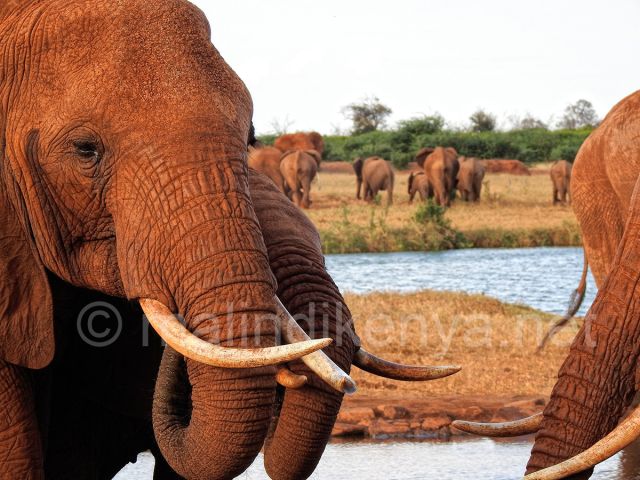
Tsavo National Park has been listed by the prestigious US newspaper New York Times as one of the...
ENVIRONMENT
by redazione

The efforts made so far to ensure water to Tsavo National Park and its ecosystem may not be enough.
The closest savannah to the Kenya coast threatens to extinction in 15 years unless seriously created irrigation systems and new dams.
NEWS
by Leni Frau
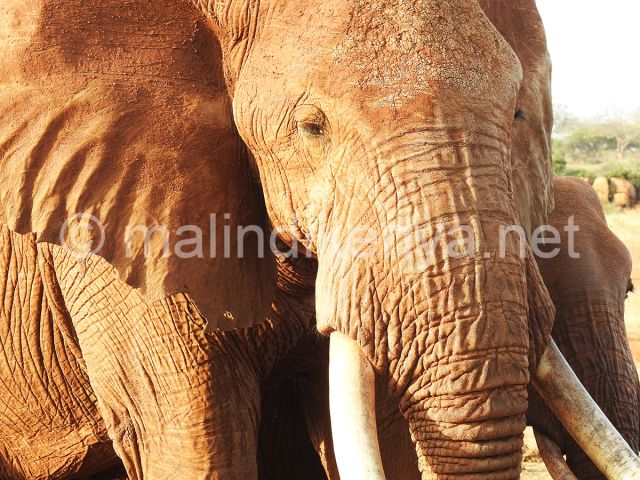
May the land of the savannah be mild to the oldest elephant in Tsavo East who left his homeland to join, as...
NEWS
by redazione
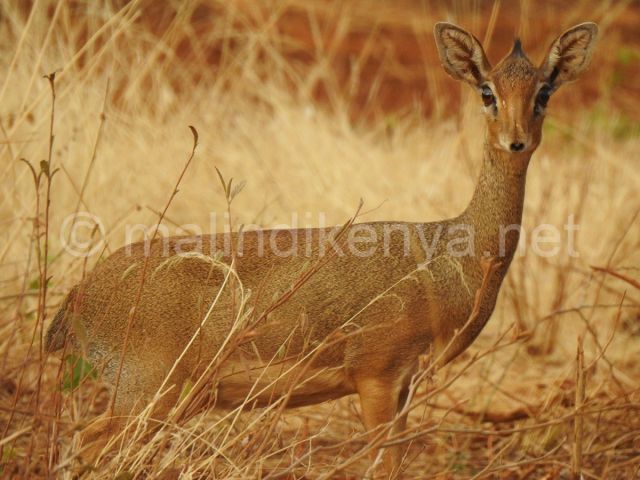
The food emergency in the hinterland of Malindi and Kilifi (as well as in the whole of Kenya) that puts the...
NEWS
by redazione

Progress for the tarmac of the road that leads to the entrance hall from Malindi Gate of Tsavo East National Park.
After the stretch from Malindi to the village of Ganda they have been leveled and are now in very good...
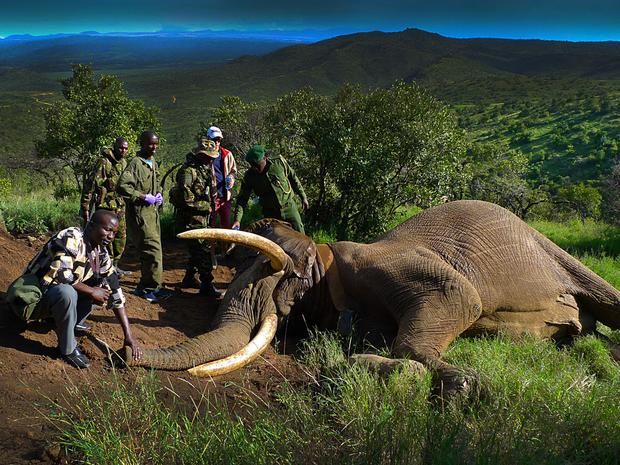
Poaching episodes in the national reserves of East and West Tsavo in the first six months of the year decreased by 96% thanks to...
RESERVES
by Leni Frau
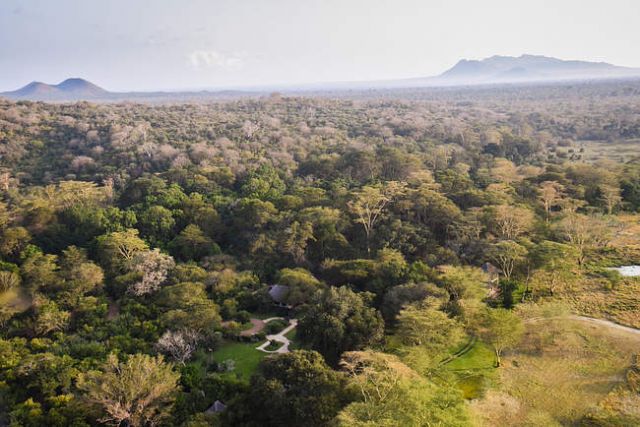
The Kibwezi Forest Reserve, established in 1936, is one of Kenya's last rainforests...
NEWS
by Leni Frau

At least two families of elephants from Tsavo East and the Galana Conservancy have left the park...
NEWS
by redazione

The sadness is deep for fans of the savannah that after so many safari, had learned to recognize it.
Satao II, one of the few remaining elephants by the giant tusks in Kenya, the "big tuskers" (estimated there would be no...